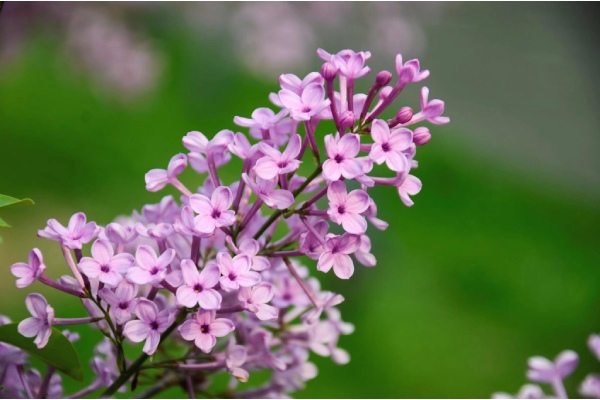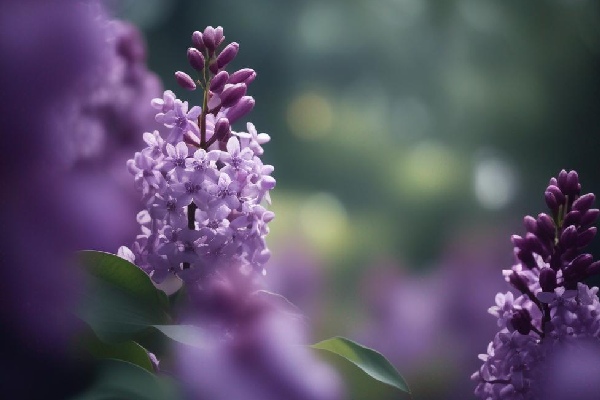Few things express “spring” as delightfully as the enchanting fragrance of lilac blossoms. Lilacs are among the most carefree shrubs, thriving well in zones 3-7. Their needs are simple: abundant sunlight, good drainage, and fertile soil. In return, you’ll be rewarded with exquisitely fragrant lavender, pink, or white flowers.
Table of Contents
ToggleWhere to Grow Lilac Flowers
Light Lilac flowers bloom best in full sunlight, so avoid planting them in shade for more than half a day. Ensure you provide enough space for their future growth. Read plant labels to understand the mature height and spread—some lilac varieties can reach 20-30 feet in height!
Soil For robust growth, lilac flowers require well-draining soil. The soil should retain enough moisture to nourish the root system. but drain freely when there’s ample rainfall. To test drainage before planting, dig a hole about 8 inches in diameter and 12 inches deep. Fill the hole with water. If it hasn’t drained after an hour, choose another location.
Planting Lilac Flowers
Lilac flowers can be planted either in spring after the ground thaws or in fall before the ground freezes. In spring, lilac flowers are typically in dormancy as bare roots. The plant isn’t dead; it’s just dormant. Upon arrival, remove all packaging from the root system and soak the roots in warm water for 10 to 15 minutes. Are you not sure how to plant bare-root trees? Read about planting bare-root trees or shrubs for more information. Alternatively, you can purchase potted lilac flowers from local gardening centers.
- Planting holes should be deep and wide enough to accommodate the plant’s root system.
- Place the top of the root ball level with the surface of the hole. If lilac flowers are bare-root, the top layer of the roots should be a few inches below the surface.
- Backfill with native soil. Thoroughly water between soil additions. The idea is to eliminate air pockets—soil should snugly surround all roots.
- Periodically watering is essential in the initial years. In dry weather,water more frequently. Once established,lilac flowers will thrive with regular rainfall.

Caring for Lilac Flowers
Fertilization: After the first growing season, apply granular organic fertilizer at the base of the plant in early spring to help provide nutrients for the upcoming year. Since buds form in the previous year, the fertilizer will nourish this year’s leaves and next year’s flowers. Lilacs prefer “sweet soil.” If your soil is acidic, adding garden lime in the fall will help maintain alkalinity.
Deadheading: For bloom-repeatedly lilac varieties, such as Josée, deadheading stimulates the production of new flowers and leaf buds. For other lilac varieties, deadheading is primarily cosmetic. It’s not necessary but does enhance the plant’s appearance.
Pruning: Lilacs don’t require annual pruning, but cutting off spent flower heads within a month of blooming helps the plant focus its energy on preparing more flower buds rather than seeds. If your lilac grows too tall, reducing its height by cutting back one-third of the oldest branches will rejuvenate the plant. Cut these main stems to 12 to 15 inches above the soil. This stimulates new bud growth. Pruning in this manner every three years revitalizes the plant without sacrificing blooms.
By following above suggestions, you can easily enjoy the delightful fragrance and visual splendor that beautiful lilac flowers bring. Lilacs have sturdy stems and a bushy growth habit, and generally do not require external additional plant supports to help maintain their shape.

